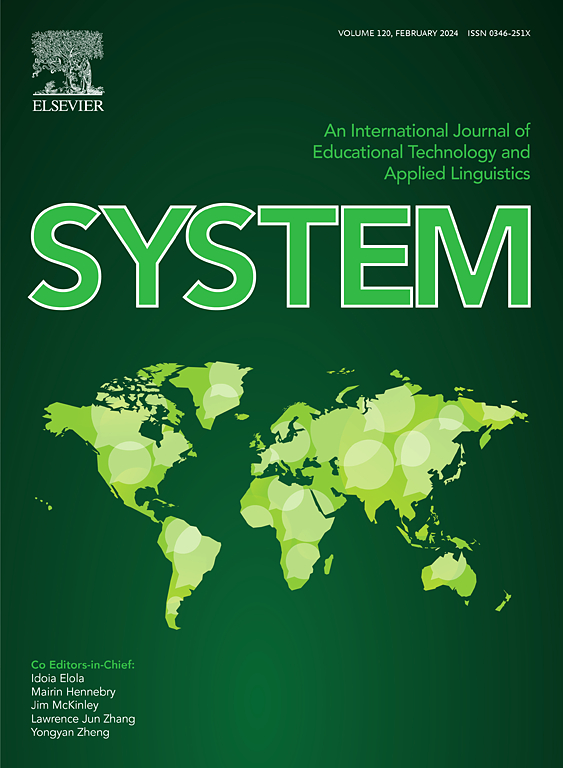AlphaLexChinese:测量汉语文本的词汇复杂性及其对二语写作分数的预测效度
IF 5.6
1区 文学
Q1 EDUCATION & EDUCATIONAL RESEARCH
引用次数: 0
摘要
本文介绍了首个用于测量汉语文本词汇复杂性的工具AlphaLexChinese (ALC)。ALC在三个维度上包含50个指标,即词汇密度、词汇复杂程度和词汇变化。为了检验ALC的适用性和有效性,我们分析了来自二语汉语写作语料库的11485篇评分文章。多元回归分析显示,9个指标对第二语言汉语写作成绩有显著的预测作用,占得分方差的14.2%。这些指标包括词汇复杂度的三个指标(即平均CPG得分、平均动词复杂度和平均AoA得分)和词汇变化的六个指标(即移动平均词汇变化、文本词汇多样性测量、词汇词汇的移动平均熵、移动平均TTR、移动平均动词变化2和移动平均动词变化1)。本文从指标的教学意义、跟踪语言的历时变化、汉语第一、二语教学和学习以及在自动作文评分系统中的可能应用等方面讨论了ALC的教学和研究意义。本文章由计算机程序翻译,如有差异,请以英文原文为准。
AlphaLexChinese: Measuring lexical complexity in Chinese texts and its predictive validity for L2 writing scores
The study introduces AlphaLexChinese (ALC), the first tool that is designed to measure the lexical complexity of Chinese texts. ALC incorporates 50 metrics across three dimensions, i.e., lexical density, lexical sophistication, and lexical variation. To test the applicability and validity of ALC, we analyzed 11,485 scored essays from a corpus of L2 Chinese writing. The multiple regression analysis revealed that nine metrics significantly predicted the scores of the L2 Chinese writing, which accounts for 14.2 % of the variance in scores. These metrics include three metrics of lexical sophistication (i.e., the Mean CPG Score, the Moving Average Verb Sophistication, and the Mean AoA Score), and six metrics of lexical variation (i.e., the Moving Average Lexical Word Variation, the Measure of Textual Lexical Diversity, the Moving Average Entropy of Lexical Words, the Moving Average TTR, the Moving Average Verb Variation 2, and the Moving Average Verb Variation 1). Pedagogical and research implications of ALC are discussed from the perspectives of pedagogical meanings of the metrics, tracking diachronic changes in language, L1 and L2 Chinese language teaching and learning, and possible applications in automated essay scoring systems.
求助全文
通过发布文献求助,成功后即可免费获取论文全文。
去求助
来源期刊

System
Multiple-
CiteScore
8.80
自引率
8.30%
发文量
202
审稿时长
64 days
期刊介绍:
This international journal is devoted to the applications of educational technology and applied linguistics to problems of foreign language teaching and learning. Attention is paid to all languages and to problems associated with the study and teaching of English as a second or foreign language. The journal serves as a vehicle of expression for colleagues in developing countries. System prefers its contributors to provide articles which have a sound theoretical base with a visible practical application which can be generalized. The review section may take up works of a more theoretical nature to broaden the background.
 求助内容:
求助内容: 应助结果提醒方式:
应助结果提醒方式:


